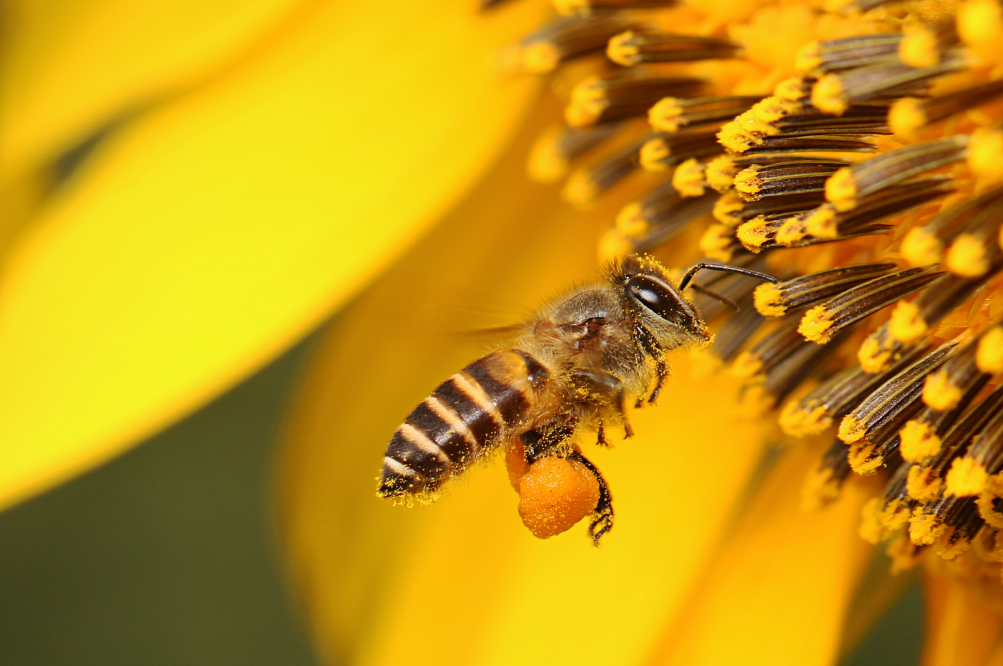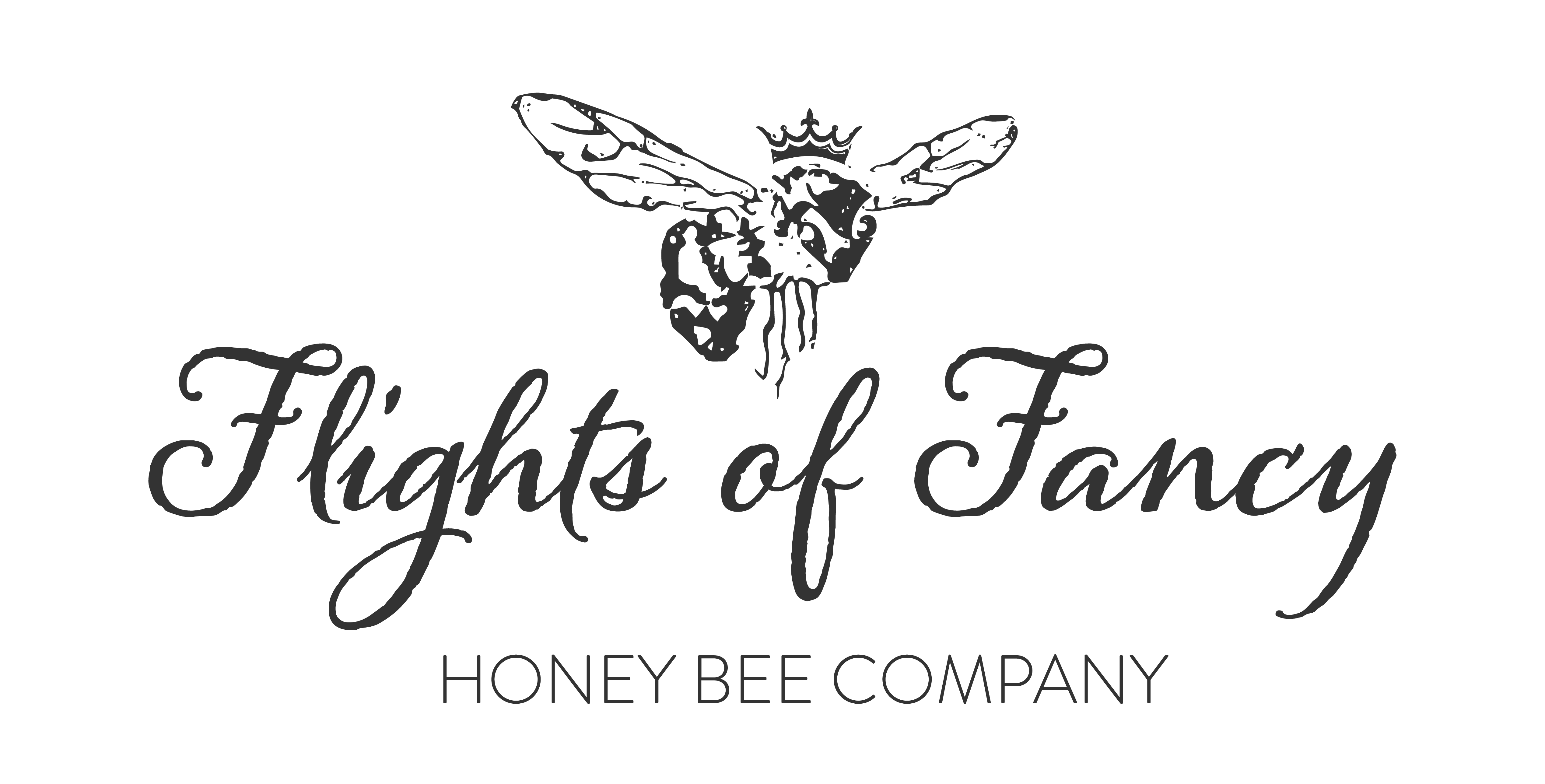Sunflowers: Feeding The Birds & The Bees

Feeding The Birds & The Bees With Sunflowers

Nothing says summer more than a Sunflower. Did you know that the Sunflower is native to North America? It has been grown and cultivated here for thousands of years.
Choose Wisely Pollinators Need The Pollen: Today there are almost more varieties than can be counted, and they range in size, color, petal types, and uses. There are dwarf types that stay small and are perfect for patio containers all the way up to giant varieties that tower 15-20 feet high. When selecting the varieties you will be growing it’s best to think through, why you are growing them.
If you are growing them for pollinators, make sure you choose varieties that are not pollen-less.
A Balanced Look

For pollinators, I like to grow a standard variety that is of average height and bloom size as well as a giant variety, as I have found hummingbirds seem to be more comfortable visiting the taller varieties and who doesn’t love walking out into their yard and seeing a towering wall of 12 ft + sunflowers. It is difficult to get up close and watch the bees and other pollinators enjoy the tall varieties since you would need a ladder and the commotion would scare most away.
So by growing the shorter (or averaged height) varieties as well you will have the chance to slowly approach the flowers and take close-up peeks at everything that is happening in your garden. Balancing the two types also looks nice in the garden since the shorter varieties will dress up the very long steam of the larger varieties which can make a garden look really plain with the beautiful yellow blooms so high above the ground.
Collecting Sunflower Seeds
If you are hoping to collect seeds, to replant the same varieties the next year instead of having to repurchase new seeds, planting multiple varieties can result in cross-pollination and the seeds will not reproduce the original varieties you planted. I do not collect the seeds for replanting, I leave the sunflower heads, and seeds intact, in the garden for the wild birds and I dry a few out and feed them to my chickens as special treats in the fall and winter. If you want to collect seeds for replanting it’s best to choose heirloom varieties and to plant different types at a distance as labeled on the packets.
Sunflowers: A Home For Bees

The majority of native bees in North America are solitary, meaning they live alone and not in a hive or nest with other members of their species. These bees use flowers and plants like sunflowers, as a refuge from the weather and as a quiet and safe place to sleep at night. Pictured to the right, you can see a Long-Horned Bee waking up first thing in the morning, waiting for the sun to rise higher. This little bee lived in this flower, sleeping in the gap where the petals met the flower head for the full time this plant was in bloom, spending the day drinking nectar and collecting pollen from the individual blooms.
After this flower began to fade and the petals shriveled and dropped this little bee moved on to the next sunflower in my garden that was beginning to bloom. Not only do bees take shelter between the leaves, but some native bees also use old steams as a nest for their eggs to overwinter in, and emerge as next year’s native pollinators. For the greatest impact, I find it best to leave the steams as is until there has been a solid week or two of temperatures over 10c.
Sunflowers: Host Plants For Butterfly Caterpillars

It’s not only bees that live and nest in sunflowers though, the silvery checkerspot butterfly uses sunflowers as a host plant for its eggs that emerge into the caterpillars. They will spin a cocoon and eventually become the butterflies themselves.
Females lay eggs in batches of about 100 on the underside of host plant leaves. Young caterpillars move in groups as they skeletonize leaves. Partially-grown caterpillars hibernate. Although Sunflowers are host plants for the caterpillars, the adult butterflies feed on nectar from flowers of red clover, common milkweed, and dogbane. (www.butterfliesandmoths.org). If you are looking to support the full lifecycle of these native pollinators consider growing plants that the adult butterflies will feed on as well. It helps to place them in the same general area as the sunflower host plants.
Sunflower Nectar & Pollen Production
Nectar and pollen production vary depending on the variety but the honey potential is 30-100 lbs per acre planted and the pollen potential is 200-250 lbs per acre planted. Sunflowers also attract specialist pollinators, called Sunflower bees (Diadasia spp. and Svastra spp.).
Where To Get Sunflower Seeds
Let’s Feed Some Bees Program: Every Flights of Fancy order between March 20th – May 30th receives a free packet of pollinator seeds, and there are five options to choose from, one of the seed options is Sunflowers (while supplies last), learn more here.
Looking to just purchase seeds? Check out Floret Flowers or West Coast Seeds (these are my favourite seed companies).
How To Grow Sunflowers
Instructions
- To Grow: Exposure: Full sun | Zone: 1-10Direct sow mid-April to late May. Starting indoors is possible, but does not gain much time. If sunflowers are allowed to get root-bound, they will lack stability at transplant time and will require staking. Optimal soil temperature for germination: 21-30°C (70-85°F). Seeds should sprout in 10-14 days. Sow seeds 5mm-1cm (¼-½”) deep. Space dwarf varieties 15cm (6”) apart, but give the giants lots of room at 1m (3”) between plants.
Notes
About The Author
Related Posts
Garden to Teapot: Growing Your Own Tea While Helping the Bees
Learn how to create a tea garden that doubles as a pollinator garden with this…
April 21, 20237 Heavenly Honey and Tea Combinations to Try on National Tea Day
Looking for a way to celebrate National Tea Day? Check out our blog post featuring…
April 8, 20231 COMMENT
Leave A Comment
Error: API requests are being delayed for this account. New posts will not be retrieved.
There may be an issue with the Instagram access token that you are using. Your server might also be unable to connect to Instagram at this time.





Let's Feed Some Bees: Year Two - Flights of Fancy Honey Bee Company | 4th Apr 22
[…] Learn more about growing Sunflowers here. […]